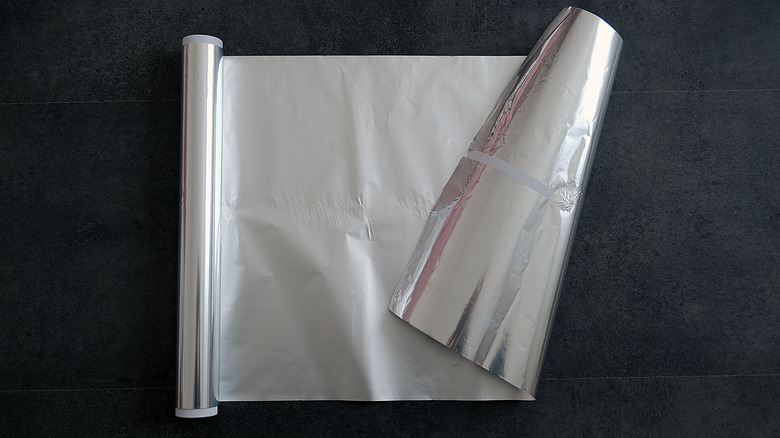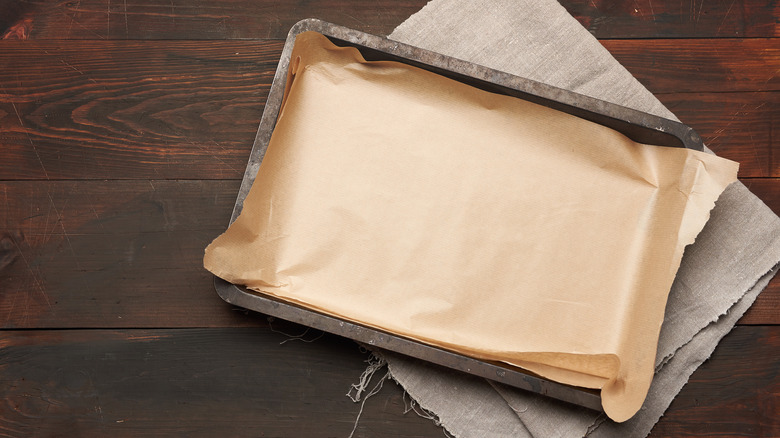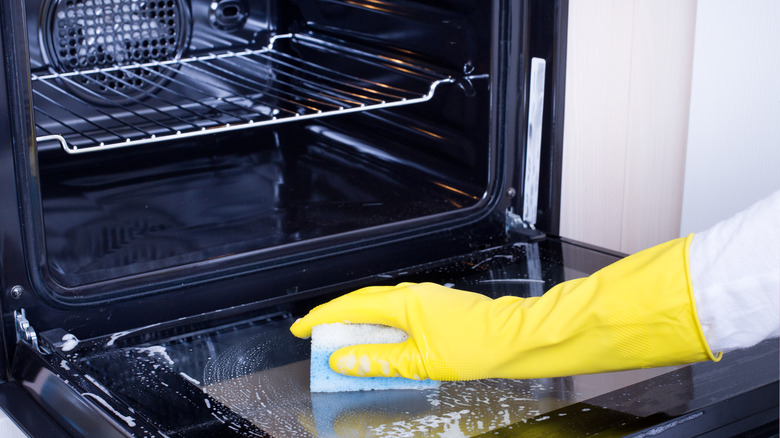How To Line Your Oven With Aluminum Foil Without Damaging It
Cleaning the oven can be an arduous task, so taking measures to keep it clean from the start can save valuable time. A common method some people use is to line the oven's bottom with aluminum foil, catching any spills or drips that can be easily discarded after cooling. However, this practice might actually cause more problems in the long run. Instead of lining the bottom of the oven with foil, try placing in on the rack beneath the pan or casserole dish.
When foil is placed directly at the oven's bottom, it can lead to several issues. The primary concern is the potential for the aluminum foil to melt, creating a challenging mess to clean and possibly causing permanent damage to the oven's element or interior surface. Additionally, foil can trap excessive heat, harming the element.
Moreover, using aluminum foil at the bottom of the oven might spoil what could have otherwise been a culinary masterpiece. In gas ovens, particularly, lining with foil can lead to inconsistent temperatures and inhibit airflow. To prevent this, cut a piece of foil slightly larger than the pan to help catch overflow while minimizing interference with the oven's air circulation.
Other solutions to prevent drips in the oven
While using aluminum foil on the rack is a viable option for easy cleanup, other strategies can also minimize the need for heavy-duty oven cleaning. One approach is to place your dish or pan on a cookie sheet or a larger pan to catch any spills. This method results in an extra dish to wash, but it's generally significantly easier than sudsing up a sponge to scrub the oven. Additionally, depending on the oven's temperature, you may be able to line the cookie sheet with parchment paper. Both metal and glass pans are suitable; however, if you opt for metal, remember to preheat it with the oven and allow it to cool completely before washing to prevent warping.
Another option, if you have an electric oven, is to use silicone liners. Despite their name, it's important to avoid lining the bottom of the oven with them. Instead, place silicone liners under the pan on the rack, similar to how you'd use aluminum foil, ensuring minimal disruption to airflow. A notable advantage of silicone liners is that they are often much easier to clean than metal or glass pans.
Oven cleaning tips
Even with the best preventive measures, spills can happen, or you might forget to use foil, trays, or silicone mats. For those with a self-cleaning oven, the solution is obvious. However, if you don't have this feature, or if the mess is too stubborn for the self-cleaning function, there are some effective tips to keep your entire oven clean and prevent food from corroding its surface.
First, you can make a paste of baking soda and water, spreading it across the oven's bottom, followed by a spray of a 1:1 vinegar and water solution. The next day, you can simply wipe the surface clean.
Another approach involves using acidic ingredients readily available in your kitchen. Lemon juice, mixed with water, is excellent for loosening stuck-on food. Meanwhile, vinegar can also be effective; add it to a pan of water and place it in the oven. Heat the oven to around 300 degrees Fahrenheit until the mixture has evaporated. After the oven cools to a safe temperature, wipe it clean. This process reduces the effort required to get your oven squeaky clean and ready for your next baking or roasting session.



